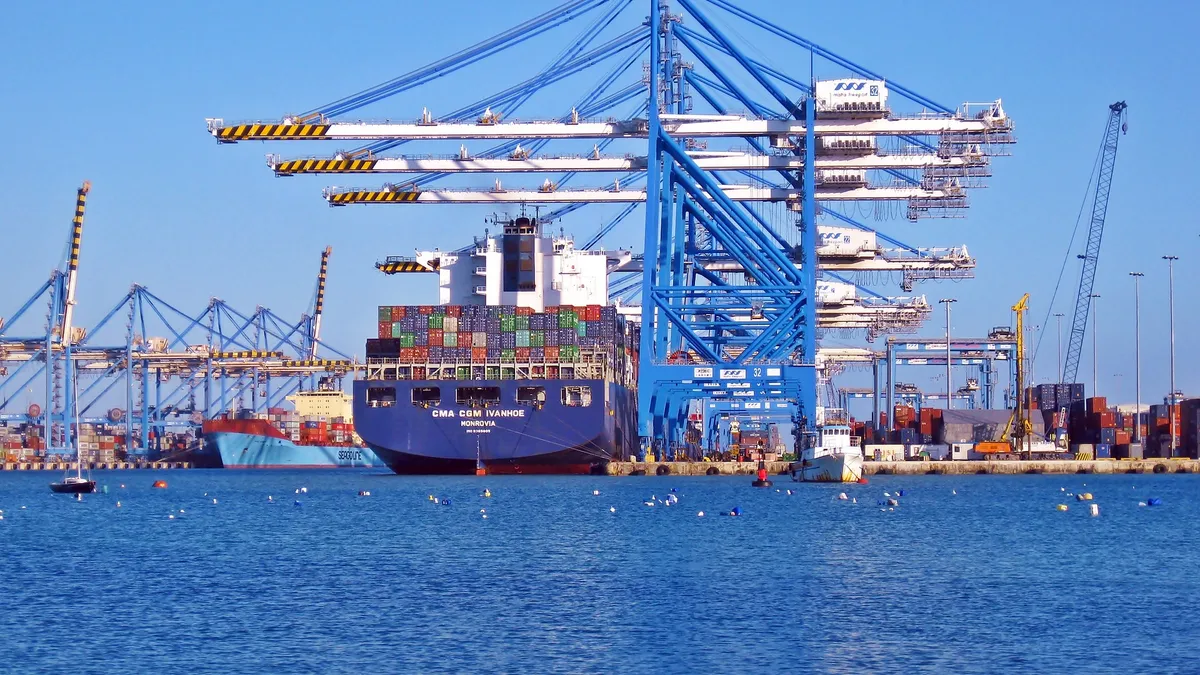Dive Brief:
- CMA CGM, Hapag-Lloyd and Cosco have signed service agreements to participate in the Global Shipping Business Network (GSBN), an ocean shipping blockchain initiative. The container lines agreed to sign on to the platform last November.
- A spokesperson for Hapag-Lloyd told Supply Chain Dive the participants agreed to set up GSBN as a not-for-profit joint venture. CargoSmart, which will provide software for the network, said the signatories plan to establish GSBN in early 2020, and pilot applications are underway and "showing promise."
- Yang Ming and Evergreen Marine were among the initial container lines that expressed intent to join GSBN, but they were not included in the list of signatories announced last week.
Dive Insight:
When GSBN first formed, it seemed to present competition and a rival service to the Maersk and IBM-led blockchain initiative TradeLens. The two platforms, however, are not mutually exclusive, as some container lines have signed on to both initiatives.
Hapag-Lloyd is among the top 10 carriers joining GSBN and TradeLens. "We take a look at where it makes the most sense to get involved," a spokesperson told Supply Chain Dive when asked what value the carrier sees in joining both blockchain platforms. "Currently, GSBN and TradeLens are the two initiatives with the largest number of participants and where we see the best opportunities to develop blockchain in container logistics."
| Carrier | TradeLens | GSBN |
|---|---|---|
| Maersk | X | |
| MSC | X | |
| Cosco | X | |
| CMA CGM | X | X |
| Hapag-Lloyd | X | X |
| ONE | X | |
| Evergreen | ? | |
| Yang Ming | ? | |
| HMM | ||
| PIL | X | |
| ZIM | X |
The German carrier was involved in talks to establish GSBN "from the very beginning," the spokesperson said, and joined TradeLens earlier this month.
Both platforms describe visibility and secure data exchange as some of the benefits of their solutions. With the two initiatives still in the pilot phase (GSBN plans to become operational early next year, and TradeLens by the end of this year), it's difficult to know at this point how exactly either one will work and how they differ.
A "winner" among the ocean freight blockchain platforms may not emerge, especially if additional carriers decide to sign on to both initiatives — or if other solutions come about.
What's clear is carriers see value in blockchain technology for their operations. ZIM has already used blockchain software to create and exchange bills of lading. Visibility has often been a point of contention between shippers and ocean carriers, with a lack of transparency spiraling into further supply chain challenges, such as long dwell times and demurrage fees. The visibility blockchain promises could solve some of these longstanding supply chain issues.















